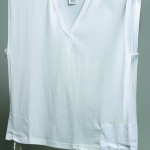Whether you are buying tzitzit for the first time, or the 50th time, there are a lot of details to be aware of. Often the tallit katan – the garment designed to enable us to wear tzitzit all day – is referred to simply as “tzitzit.” Thus you will come across “cotton tzitzit” and “wool tzitzit” and “t-shirt tzitzit.” All these refer to the garment, not the tzitzit strings.

Sizing can be complicated. There is one sizing system for a wool tallit katan and another for cotton. Actually there are two for cotton, the traditional tallit katan and the t-shirt style (also known as “NeaTzit” or “TrimTzit”). And there is one tallit katan sizing system in Israel and another in the U.S.
To spare our customers from data overload, we list separate sizing tables on each tallit katan product page.
Tzitzit Options
Typically tallit katan tzitzit are thin. Some people opt for thick, either for aesthetic reasons, or because they want to make sure the strings won’t break. We also offer a third option: medium tzitzit. They are a bit closer to thin than to thick. In fact, at a glance you can hardly tell the difference, but they are a bit easier to tie and a bit stronger.
Tzitzit come in different levels of kashrus, based on how early mitzvah intent is introduced during the production process. The standard default option is regular handmade (avodat yad) tzitzit. Other types include lashonot hatzemer and niputz lishmah (see How Tzitzit Are Made).
We offer six different tzitzit tying customs: Ashkenazi, Sephardic tied 10-5-6-5, Sephardic tied 7-8-11-13, Ben Ish Chai, Chabad, Yemenite with 7 chulyoth and Yemenite with 13 chulyoth. The first two are by far the most common.

